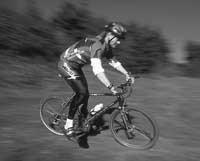Wind always against
What cyclists have always suspected has been confirmed: if you have wind against, the circular route becomes longer.
At first glance, at least, it seems evident that the time a cyclist loses when he has to act against the wind, then, when he returns, he will win because the wind blows in favor. But the recent study by a British engineer shows that life is not so compassionate. The favorable wind never compensates for the loss caused on the contrary and its possible influence on the time of travel is evident.

Alan Cumming, a mechanical engineer at the University of Hull (England), began studying the wind effect after struggling with the wind of the Holderness peninsula next to his home. On windy days, he realized that he needed more time to complete his usual tour; instead of 25 minutes, he needed 30 or 35 minutes.
Using the aerodynamic data of the cyclists and the friction coefficient between the road and the wheel, he calculated the force that the opposite wind of a certain speed exercised against the cyclist. Then he also calculated the power the cyclist needed to overcome that force. With constant power and varying wind direction, Cumming derived a nonlinear equation that allowed him to analyze the influence of wind on speed and travel time.
Cumming has concluded that (European Journal of Physics, 18, 176), the speed of the cyclist circulating at 27 km/h in the absence of wind will be reduced by 28% if the wind is contrary to 13 km/h. On the other hand, it indicates that the equation helps the background wind, but the favorable effect does not compensate otherwise and in a circular path it takes 7% more time. The difference of wind effect in favor and against, the loss of speed, increases noticeably with the increase of wind speed.
If in a circular route the wind speed equals that of the cyclist when there is no wind, it takes 20% more to complete the route. If the wind speed exceeds 3 times that of the rider, it takes 350% more to complete the tour.





